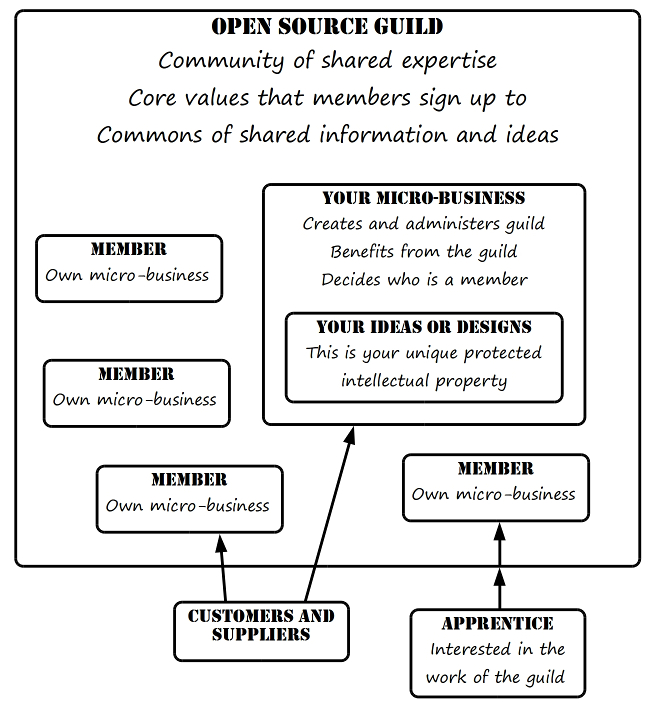
Background
Open source is a way of collaborating with others through an online commons of shared knowledge. The medieval guilds enabled a group of masters recruit members to a community of practice in a specific craft industry. Linking open source to guilds is the starting point for the open source guild business model. Businesses based on the open source guild model have an intellectual commons which is managed and protected by the founder, who admits members to the guild at their discretion. A strength of the open source guild model is that it offers a mechanism for the founder to grow a networked micro-business with no external investment, where the community that develops around the commons creates the capacity for a business at its core. Members of the guild can benefit from a larger overall market and economies of scale while remaining independent micro-businesses.
How it works
The founder establishes the guild, chooses who can be a member of it, establishes their own micro-business to service the guild, maintains the commons and protects the proprietary intellectual property (IP), which can be just a name or logo. Sharing of the proprietary IP is restricted to members of the guild to allow them to develop their businesses around the commons. The diagram below shows how an entrepreneur can create a membership community using the open source guild model.

Further reading
The links below offer further information:
A4 information sheet (PDF).
A4 flyer (PDF).
Downloadable A3 poster (PDF).
Acknowledgements
The open source guild model has been developed through research by Justin Larner at Lancaster University, partially funded by the UK Digital Economy Programme (RCUK GrantEP/G037582/1), which supported the HighWire Centre for Doctoral Training.
